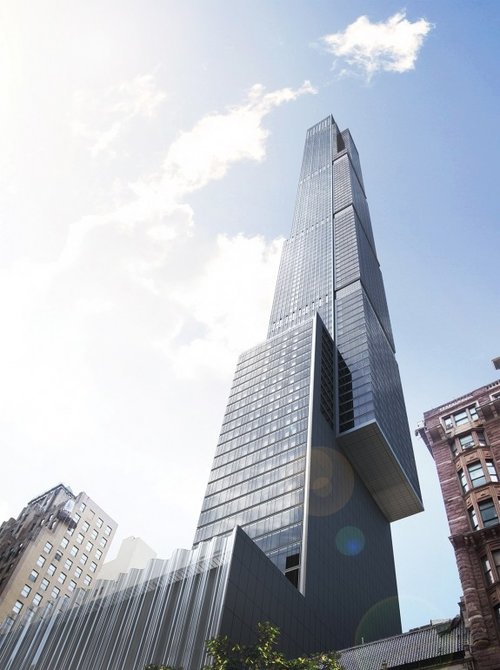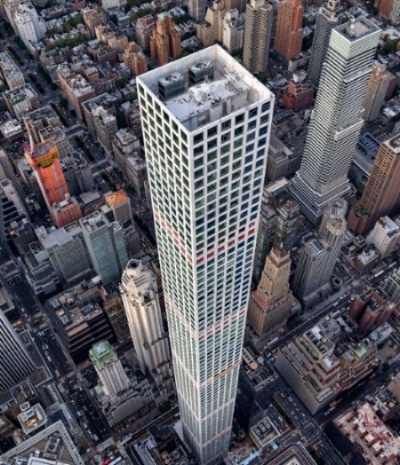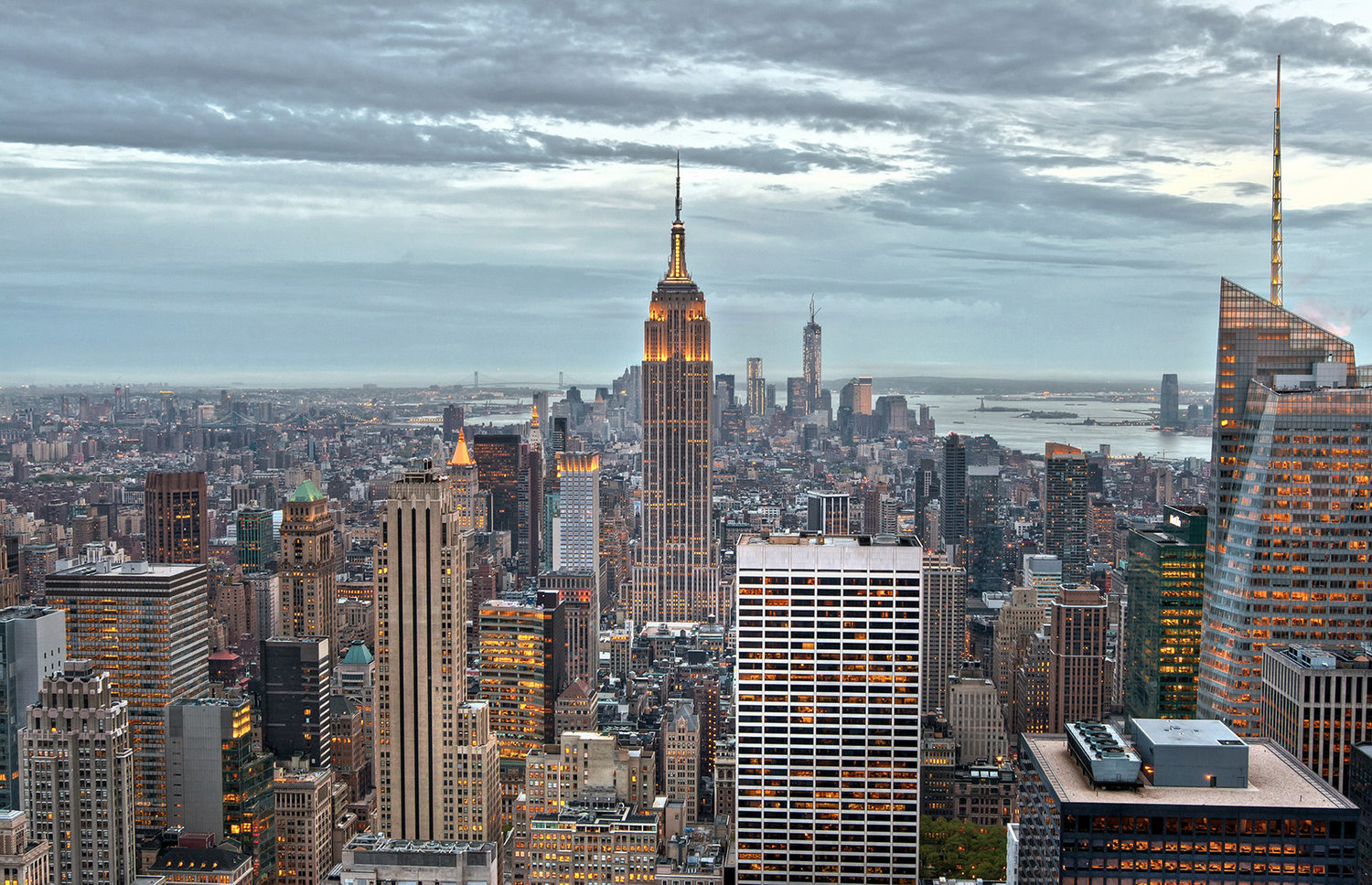They’re tall, skinny, and very expensive. They are the super-models of real estate, but like their catwalk counterparts, Manhattan’s newest skyscrapers are seen by many as being the product of a heartless consumer culture that threatens to transform the city’s iconic skyline into a futuristic, sci-fi freakshow.

Currently under construction, when completed Central Park Tower at 225 West 57th Street will be the second-tallest skyscraper in the country.
Whatever your opinion, there’s no denying that the slew of new, gigantic buildings – officially classified as “super-tall” when exceeding 984 feet in height – are changing Manhattan for good. By far one of the most talked about of these new buildings is Central Park Tower, due to reach 1,550 feet. Though sales have not yet commenced, rumor has it that several of the apartments will be asking for more than $20 million. Located at 217 West 57th Street, the building will be the jewel of Billionaire’s Row, which also includes nearby super-tall residences 220 Central Park South and One 57. Already topped out is the striking 53W53. Skyline neighbors also include 432 Park Avenue and 30 Hudson Yards. Permits were also filed this month for 12 West 57th Street, according to NY Yimby, though its 672 foot height makes it a mere sapling compared to its willowy neighbors.
One of the most famous of New York’s super-tall residences is One World Trade Center, which stands at 1,776 feet (3 World Trade Center – 1,079 feet – is due to open imminently). Other new properties include One Vanderbilt (1,401 feet), 432 Park Avenue (1,396 feet), 2 World Trade Center (1,340 feet) and of course, the granddaddy of them all, the Empire State Building (1,250 feet). There are many more throughout the city, including stalwarts like the Chrysler Building and the decade old New York Times Building (1,046 feet).
What does all this sky-high construction mean for Manhattan? Detractors argue that those on street level have been reduced to ants scurrying in the shadows, with natural sunlight reserved for only the tallest of buildings. Proponents state that all the new construction has been good for the city’s economy, bringing in money, residents, and – perhaps most importantly – jobs!

Currently the tallest residential building in the world, 432 Park Avenue tops out at 1,396 ft.
Sales from the super-tall residences will also inevitably drive up property values in Manhattan and the neighboring boroughs, which in turn will generate wealth. But for the middle-class wage earner, multi-million-dollar penthouses in the sky remain out of reach, and the availability of affordable housing may grow more elusive as millionaires make Manhattan their own.
But there are still opportunities in Manhattan for the thrifty and resourceful. A recent trend has seen older residences – particularly lofts and brownstones – being repurposed for habitation, generally by shrewd millennials. These homes are oftentimes situated in neighborhoods boasting easy commuter access and colorful nightlife. The response to this by super-tall property developers has been to emphasize that living in luxury does not mean living in isolation. Danish architect Bjarke Ingels, whose many projects include 2 World Trade Center, told the New York Times:
“The tendency has been to create a hermetic experience, with floor-to-ceiling windows, so you’re incarcerated in a box,” he said. “Outdoor space used to be considered a nuisance, which didn’t contribute to the building’s value, but I believe that’s changing. I am starting to hear leasing people say they want outdoor space. That’s true in residential as well as commercial properties. I think the future at 800 feet is more likely to be engaged with the outside and less an escape from it.”

